When the city fell under Prussian jurisdiction in the 19th century, however, Jews slowly found themselves accepted into the fold. Following the Great Fire of 1803 they were allowed to live freely throughout the rest of the city and as such ties between Jews and Germans strengthened. In fact, so solid were these relations that the Jewish community rallied around the Germans during the 1918-1919 Wielkopolska Uprising, a fact not forgotten by the local Poles. When Poznań was absorbed into the Polish nation in 1919 the Jews found themselves once more on the hard end of local feelings, and a significant number migrated west to Germany, where they expected greater tolerance.
With WWII looming, Poznań’s Jewish population stood around 1,500 - a number that would vanish soon after the city was annexed into the Third Reich in 1939. The city was named capital of the Reichsgau Wartheland province, and a plan was hatched to rid the city of its Jews within three months. Deportations began on December 11th of the same year, with Jews packed into cattle trucks bound for the ghettos of Warsaw or Lublin, and on April 15, 1940, the fascist rag Ostdeutscher Beobachter gleefully reported the removal of the Star of David from the last synagogue left standing. Those who remained in the ghettos of Reichsgau Wartheland, as well as some poor souls from Austria, Luxembourg, and other countries - around 11,000 people total - were brought into the city’s 29 labour camps to do back-breaking work, including building the Poznań airport and a highway connecting Berlin and Łódź (using Jewish tombstones as some of the building materials), digging what is now Lake Rusałka and Lake Malta, and liquidating Jewish cemeteries. Meanwhile, horrific medical experiments were conducted on inmates at the ‘Reich University’ Institute of Anatomy, with some corpses shipped off to the Natural Museum in Vienna to become part of an anti-Semitic exhibition. The labour camps operated until August 1943, at which point prisoners were sent off to the Auschwitz death camp.
Indeed, Poznań was something of a model Nazi city, and on October 4, 1943, Heinrich Himmler gave a sordid speech to his Nazi cronies about the extermination of the Jewish people. A small number of Jews survived in hiding, and after the war several hundred actually returned to re-settle in the city. However no effort was made by the government to re-establish Jewish culture, and the subsequent anti-Zionist policies of the post-war communist government saw the number of Jews dwindle to well under a hundred.
What to See
The Nazis were meticulous in their destruction of Jewish heritage and traces of it are few and far between today. Rather miraculously, however, Poznań's New Synagogue (ul. Wroniecka 11A) survived the war by being converted into a swimming pool and rehabilitation centre for Wehrmacht officers. The 'swimagogue' (as it was cheekily known) was returned to the Jewish community in 2002; however, disrepair forced its closure and plans for its restoration have stalled. In 2008 the square outside the synagogue was named in honour of Rabbi Akiva Eger, renowned Talmudic scholar and halakhic decisor commonly accepted as Poznań’s greatest rabbi.
The early 19th-century Jewish cemetery on ul. Głogowska was destroyed and its tombstones used to pave roads during WWII, after which the area was incorporated into the Trade Fair grounds. In recent times, however, steps have been taken to commemorate its existence with a memorial site on ul. Głogowska 26A, which consists of the reconstructed graves of Rabbi Akiva Eger, his wife and son, and two other Poznań rabbis; unfortunately, visit is by previous arrangement only, though you can peek through the gate anytime.
Matzevahs recovered from various streets have been placed in a lapidarium at the Miłostowo Cemetery (ul. Gnieźnieńska) alongside mass graves holding the remains of around 1000 Holocaust victims. A memorial to the inmates of one of Poznań’s Nazi labour camps stands at what is now the Righteous Among the Nations Square (next to the Multikino, ul. Królowej Jadwigi 51), and commemorative museums exploring the horrors of forced labour and extermination are the Wielkopolska Martyrs Museum, located in Fort VII, a former death camp, and the Martyrs Museum in Żabikowo.
While on ul. Żydowska, keep an eye out for the former Salomon Beniamin Latz Home for the Elderly and Infirm (ul. Żydowska 15/18). Established in 1908 after the Latz foundation swapped properties with the Jewish Community, the home took the place of three synagogues that used to exist at the address; meanwhile, the foundation’s former hospital at ul. Wroniecka was torn down to make room for the New Synagogue. If you manage to get in (the building is currently residential), traces of the in-house synagogue’s balcony can be seen in the stairwell. Another building of note is the former Jewish Library at ul. Żydowska 32, founded in 1904.
On the same street, the unassuming Church of the Most Holy Blood of Jesus (ul. Żydowska 34) is a testament to the vicious anti-Semitism that plagued the city for much of its history. One of Poznan’s most offensive, harmful and well-documented legends (recorded in multiple sources, including by medieval historian Jan Długosz) claims that, in 1399, local Jews paid a poor woman to steal three Christian sacramental wafers, placed them on a table and began stabbing them with a knife. Blood burst everywhere, so the Jews tried to drown them in a well, but they just floated out, hovering in the air. The Jews then wrapped them up and tried to bury them in the marshes south of the Old Town, but the holy hosts unburied themselves and floated there too, scaring the Jews into fleeing the scene. Later, a young shepherd found the floating wafers, a church was consecrated on the spot of their discovery, and the offending Jews were ‘severely punished.’
That's the founding myth of Poznań’s Corpus Christi Church, and it was passed down the generations with enough conviction that when a hidden table and well were uncovered in the basement of the tenement at ul. Żydowska 34 in 1620, it was designated as the site of the infamous sacrilege and soon became a pilgrimage site. Under intense pressure from the Carmelites, the city finally allowed for the entire townhouse to be converted into the Church of the Most Holy Blood of Jesus in 1704, and believers still go there every Sunday to pray and drink the water of the well, which they say has miraculous properties (something about a blind girl's vision being restored during the stabbing was tacked on later). Dare to venture inside and you’ll see 18th-century frescos depicting a trio of Jews desecrating the wafers with the aid of the Devil himself. This infamous example of anti-Semitism is told in detail on the church's website without any hesitation, and the frescos remain in plain sight (and were refreshed not long ago), while most other traces of Poznań’s Jewish heritage have vanished from view. To be fair, an antique plaque referring to the profanation of the hosts, which long adorned the church’s facade, was finally taken down by the archbishop in 2005 (you can see it in the Archdiocese Museum).


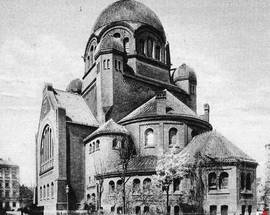
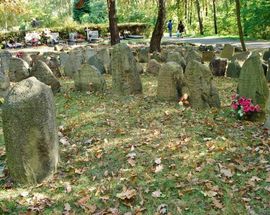
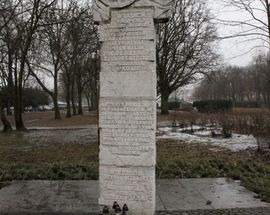
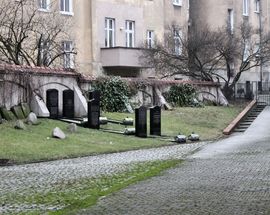
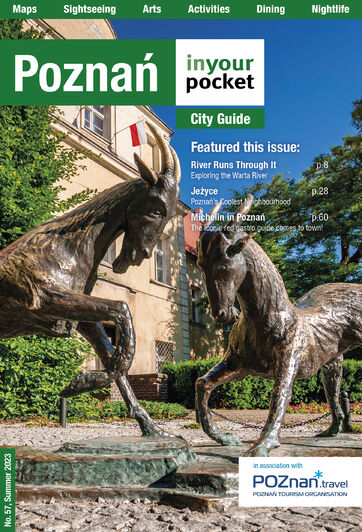
Comments